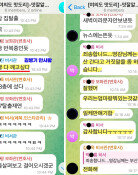Rediscovery of Goryeo Dynasty
"In Goryeos custom, sons live away from their parents after their marriages but married daughters live together with their parents. It is similar to the ancient Chinese Qin Dynastys custom to have a son-in-law live with his spouses family. In Goryeo, daughters are responsible for caring about parents. People in Goryeo are affectionate to their daughters and sincerely care for a daughter, wishing she grows soon and takes care of them." This is a part of writing by Lee Gok, a great writer at the end of Goryeo, an ancient Korean dynasty. Lee wrote this to appeal for abolishment of Gongnyeo system, tribute of Goryeo women to Won, the Chinese Dynasty that ruled Goryeo at that time. Unlike Joseon Dynasty having Confucianism as ruling ideology, women in Goryeo had different social positions in the society. There was no restriction for a Goryeo woman to get married again if her husband passed away. Inheritance was distributed without any discrimination between a daughter and a son. Daughters also paid for funerals of their parents jointly with sons.
Taejo Wang Gun, the founder of Goryeo dynasty, put an end to chaos of later three kingdoms period and achieved independent unification across the Korean Peninsula. Goryeo that he built was active in exchanges with other nations. Not to mention adjacent China and Japan, Goryeo had trades with Arabian merchants and spread the name of "Korea" to the world. Goryeo overcame invasion of various foreign powers including Jurchen and Mongolia. Throughout 500 years of the dynasty, Goryeo blossomed beautiful and splendid culture. Having Buddhism as the state religion, various Buddhism related cultural artifacts were created.
On Thursday, the Cultural Heritage Administration made public 77 Buddhist relicts unearthed from the site of Dobong Confucian academy in Seoul. Out of them, gilt bronze Geumgang-ryeong (a bell used for Buddhist ceremony) presumed from the 12 century, was named as the best artifact. It gives a glimpse of the Goryeo metal workmanship culture with its embossed carving of four devas image and five great kings. The National Museum of Korea presented to the public in July Goryeo Najeon Gyeongham (a mother-of-pearl inlaid box to store Buddhism scriptures), which showed the essence of delicate and splendid arts and crafts. Najeon Gyeongham is a box to store Buddhist scriptures. Out of only nine pieces around the world, the museum supporters` association purchased one from Japan and donated to the museum.
An open and dynamic era, Goryeo has been neglected in research compared to Joseon. It is because the firsthand historical records are lacked and most of remains and relics are located in Gaesong in North Korea. However, more and more attentions are paid to rediscovery of Goryeo Dynasty. During his recent visit to Korea, University of Hawaii professor emeritus Edward Shultz said, Goryeo was excellent at receiving foreign cultures openly, combining it with local elements and upgrading it to another level.



![보일러 풀가동해도 춥다?…난방비 폭탄 범인은 ‘이것’ [알쓸톡]](https://dimg.donga.com/c/138/175/90/1/wps/NEWS/IMAGE/2025/12/24/133029046.3.png)



